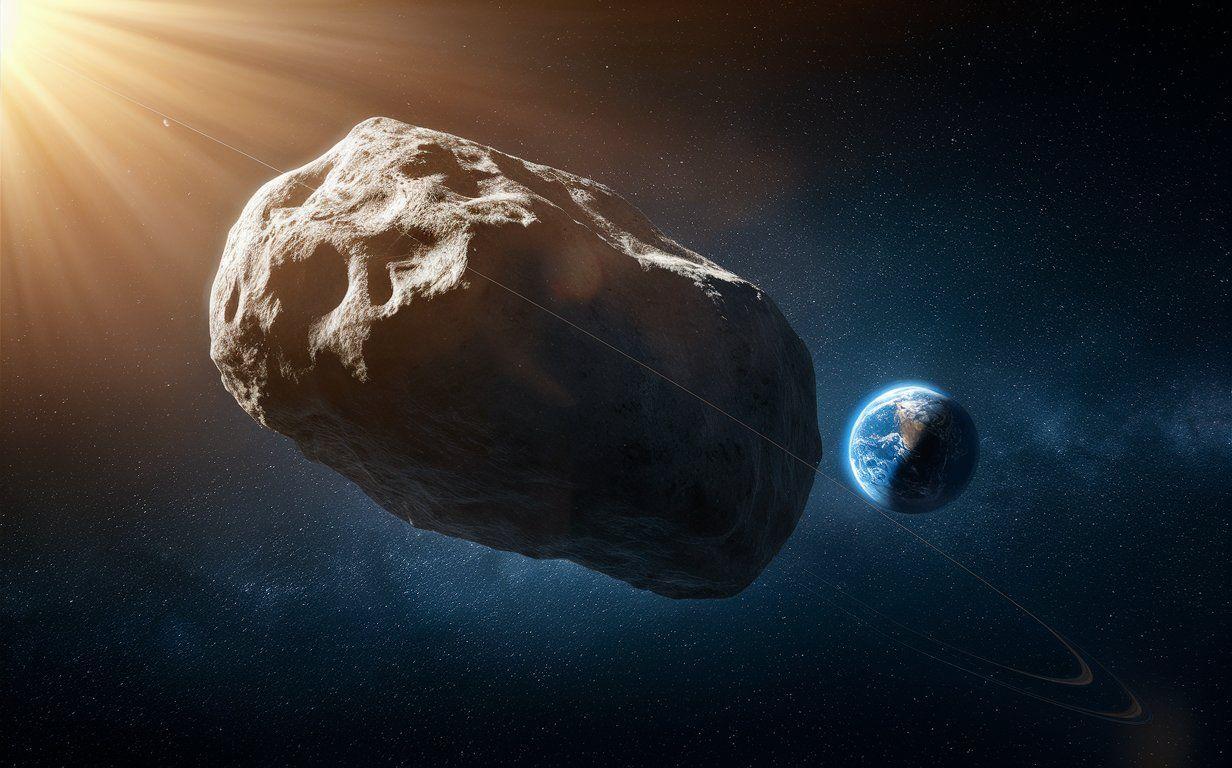- 🌌 Recent studies reveal that a hidden population of co-orbital asteroids near Venus might eventually shift closer to Earth.
- 🔭 These asteroids, residing in gravitationally stable Lagrange points, exhibit unpredictable orbits over millennia.
- 🚀 The upcoming Vera Rubin Observatory and NASA’s NEO Surveyor are expected to enhance detection capabilities.
- 🌍 Understanding and monitoring these asteroids is crucial for assessing any potential long-term risks to our planet.
In the vast expanse of our solar system, hidden populations of celestial bodies often go unnoticed. Among these are a group of asteroids known as co-orbitals, which share their path with Venus around the Sun. While their existence has been acknowledged for years, recent studies suggest that some of these asteroids might eventually take a course leading them closer to Earth. Although there is no immediate threat, this revelation emphasizes the importance of keeping a vigilant eye on these elusive objects.
Unpredictable Orbits
The co-orbital asteroids of Venus reside in gravitationally stable regions known as Lagrange points. According to simulations, these asteroids can develop unstable trajectories over periods exceeding 12,000 years, potentially adopting elongated orbits that increase their likelihood of intersecting with Earth’s orbit. Among the 20 identified co-orbitals, three have been projected to approach our planet. These projections, shared in the journal Icarus, pertain to asteroids measuring between 984 and 1,312 feet in diameter. While their size categorizes them as potentially hazardous, none pose a threat for several millennia.
The gravitational disturbances these asteroids experience lead to chaotic paths over the long term. A secondary study, currently under review, reinforces this instability even for orbits that initially appear to be less eccentric. This unpredictable nature makes understanding their movements critical for assessing any future risk they might pose to Earth.
Complex Detection Challenges
Detecting these asteroids is a challenging endeavor due to their proximity to the Sun. Terrestrial telescopes can only observe them briefly during twilight hours, with solar brightness and atmospheric distortion significantly hindering detection efforts. However, future advancements in technology promise to revolutionize this search.
The upcoming Vera Rubin Observatory in Chile is poised to transform asteroid detection. With its extensive field of view and enhanced sensitivity, it could uncover thousands of new asteroids, including those concealed near Venus. Complementing these efforts, a space-based infrared telescope like NASA’s NEO Surveyor would bypass atmospheric interference, providing a clearer picture. These tools are expected to offer a more accurate assessment of any potential risks. Currently, scientists reiterate that there is no immediate threat from these celestial wanderers.
Future Implications and Preparedness
The potential for these co-orbital asteroids to alter their paths and come closer to Earth raises important questions about planetary defense and preparedness. While the immediate danger is non-existent, understanding their movements could be crucial in the distant future. The unpredictable nature of their orbits suggests that continued monitoring and research are necessary.
By expanding our observational capabilities and refining our understanding of these celestial objects, we can better prepare for any eventualities. The studies underscore the need for international collaboration in tracking and analyzing these asteroids. As we advance our technological capabilities, the hope is to mitigate any long-term risks they might pose to our planet.
Enhancing Our Observational Arsenal
To effectively monitor these elusive asteroids, the astronomical community is turning to innovative technologies and methods. The combination of ground-based observatories like the Vera Rubin Observatory and space-based instruments such as the NEO Surveyor is expected to significantly enhance our ability to detect and track these asteroids.
These advancements will not only improve our understanding of the asteroids’ trajectories but also help refine models predicting their future paths. With a more comprehensive observational arsenal, scientists aim to provide earlier warnings of any potential threats and formulate strategies to address them. This proactive approach is essential for ensuring the safety of our planet in the centuries to come.
As we continue to explore the mysteries of our solar system, the presence of these hidden asteroids reminds us of the dynamic nature of the cosmos. While current observations assure us of no imminent threat, the question remains: how can we further enhance our capabilities to safeguard Earth from the unknowns of space?
Our author used artificial intelligence to enhance this article.
Did you like it? 4.7/5 (29)

